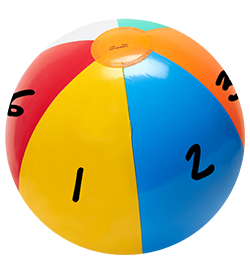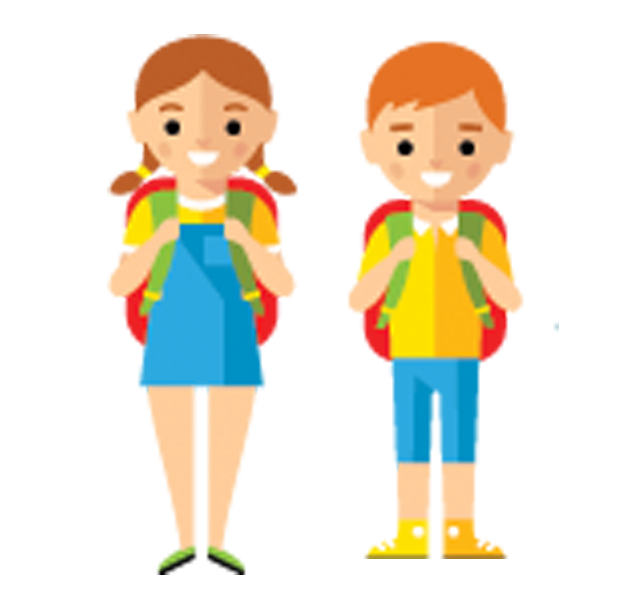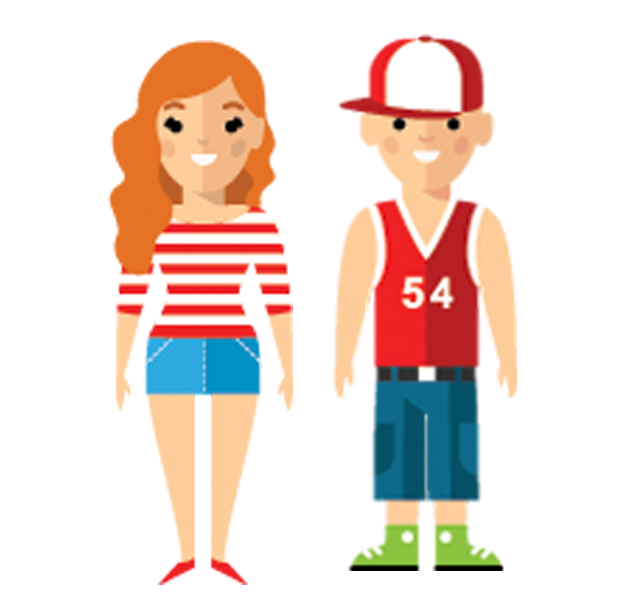 Relevancy and Engagement
dc.agclassroom.org
Relevancy and Engagement
dc.agclassroom.org
Nutrition Across the Lifespan
Grade Level
Purpose
Students will trace the energy and nutrition requirements of the human lifecycle from beginning to end and identify the physical and cognitive growth happening in each phase of life. Grades 9-12
Estimated Time
Materials Needed
Engage:
Activity 1: Pregnancy
- Nutrition Across the Lifespan Foldable
- Nutrition Across the Lifespan PowerPoint slides
- Pregnancy Snack Examples, 1 classroom copy printed front to back
- Beach ball with sections numbered 1-6
Activity 2: Infancy
- Nutrition Across the Lifespan Foldable
- Nutrition Across the Lifespan PowerPoint
- Infant Foods handout, 1 copy per student
- Beach ball with sections numbered 1-6
Activity 3: Early Childhood
- Nutrition Across the Lifespan Foldable
- Nutrition Across the Lifespan PowerPoint
- Early Childhood Food Scenarios printout, 1 copy per class cut into strips
- Beach ball with sections numbered 1-6
Activity 4: Middle Childhood to Preadolescence
- Nutrition Across the Lifespan Foldable
- Nutrition Across the Lifespan PowerPoint
- Healthy Kids Learn Better video
- Beach ball with sections numbered 1-6
Activity 5: Teenage Years
- Nutrition Across the Lifespan Foldable
- Nutrition Across the Lifespan PowerPoint
- Adolescent Development: The Art of Growing Up video
- (optional) 8 Gameday Nutrition Tips for Young Athletes, 1 copy per class cut into strips
- Beach ball with sections numbered 1-6
Activity 6: Adulthood
- Nutrition Across the Lifespan Foldable
- Nutrition Across the Lifespan PowerPoint
- Beach ball with sections numbered 1-6
Activity 7: Senior Years
- Nutrition Across the Lifespan Foldable
- MyPlate for Older Adults video
- Beach ball with sections numbered 1-6

Vocabulary
cognitive growth: development of an individual's mental capacity including thought processes, memory recall, problem solving, language learning, and perceptual skills
Dietary Guidelines for Americans: food-based recommendations to promote health, help prevent diet-related chronic diseases, and meet nutritional needs
energy: power derived from the utilization of physical or chemical resources
MyPlate: nutritional guide published by the United States Department of Agriculture (USDA); icon depicting a place setting with a plate and glass divided into five food groups
nutrient dense: foods that are high in nutrients but relatively low in calories
physical growth: change in body size (height and weight) and in the size of organs
Did You Know?
- Only 1 in 10 adults meet the recommended daily fruit and vegetable intake.1
- Among American youth, just 9% of high school students meet the fruit recommendation and only 2% meet the vegetable recommendation.1
- Pregnant women are not actually “eating for two.” Calorie needs increase only slightly around the middle and end stages of pregnancy.2
- Aging adults may need fewer calories since they tend to be less active and carry less muscle; however, they still require the same or even higher levels of nutrients .3
Background Agricultural Connections
The body requires energy to grow, develop, and perform daily functions. Energy is provided through the sources of food an individual eats. Diet recommendations vary slightly depending on the age of the individual as they move through the lifespan. General recommendations outlined by the Dietary Guidelines for Americans and MyPlate are meant for the general population aged two years and older. These guidelines include having half the plate consist of fruits and vegetables, choosing lean proteins, consuming mostly whole grains, and selecting low-fat dairy products.
At any given age, the body experiences different stages of physical and cognitive growth and development followed by other stages of maintenance. Each stage leads to a shift in nutritional needs and potential concerns. Specific needs vary based on age, gender, physical activity, and genetics. These are some of the average growth and energy need trends:
Pregnancy: Energy (calorie) requirements are increased during pregnancy. Exact increases vary by trimester but average out to be an extra 300 calories per day. Foods should focus on nutrients that support growth and development, including folic acid, vitamin A and D, and choline.
Infancy 0-12 Months: Overall energy requirements are high in comparison to body weight from infancy to around middle childhood. 100% of an infant's nutrition is provided through breastmilk or formula until 4-6 months of age when they can begin learning to eat other developmentally appropriate foods.
Early Childhood: A lot of growth and development occurs at this time. Energy requirements will vary, but a good rule of thumb is that a serving size for this age group is half the size as for an adult (½ slice of bread). Inadequate intake of iron, calcium, and zinc in early childhood is common in our culture.
Middle Childhood to Preadolescence: During these ages, children experience high levels of change and growth both physically and cognitively.
Teenage Years: Growth and energy requirements increase in the teenage years as individuals again experience growth spurts and sexual maturity. Energy requirements at this point begin to vary greatly based on gender and physical activity levels.
Adulthood: Once adulthood is reached, physical growth moves into a maintenance phase. Proper nutrition, physical activity, and following the MyPlate guidelines for a healthy diet will help adults have the best health and quality of life possible.
Elderly: Individuals in the later years of their life can experience both muscle and bone loss if nutrition and physical activity are not maintained. Overall energy requirements decrease.
Following nutritional guidelines in each stage of life helps foster healthy physical and mental growth and a healthy overall relationship with food.
Engage
- Ask students, “Why do you like to eat food?” Possible answers may include taste, social experience, memories, etc. Then ask “Why do you need to eat food?” (your body needs food to grow, develop, and function at its best).
- Show What Your Body Does Every 60 Seconds (1:35) to illustrate what the body does at rest.
- Explain to students, that even at rest (right now while they are sitting in their seats), their body is hard at work. Just like a car needs gas to get from point A to point B, your body needs fuel (food) to have energy to accomplish activities throughout the day.
- Ask students, “What foods and diet practices are best for your body?” Answers could include a variety of responses, but focus on those which include MyPlate, variety, moderation, and the different food groups. Refer to an image of MyPlate. Explain that a healthy diet as recommended by professionals means that meals have these food groups in these proportions.
- Ask students, “Do you think these guidelines apply to everyone?” Explain that these are general guidelines for individuals beginning at age 2. While the general concepts remain the same, it is important to note that different stages of life bring specific nutrient requirements to ensure proper growth. Explain that we will be exploring how nutrition and food needs change throughout the lifespan depending on growth and development stages of the body.

Explore and Explain
- Give each student one copy of the Nutrition Across the Lifespan Foldable. Instruct students to cut out each page, tape/glue all three pages together, then fold it like an accordion as pictured on slide 2 of the Nutrition Across the Lifespan PowerPoint and in the image below.
- Explain to students that we are going to take a journey and hypothetically watch two infants (one boy and one girl) advance through their life and identify how their nutritional needs change in each stage of life.
Note to Teacher: Each of the seven lifecycle activities follows a consistent pattern. It begins with a class discussion outlined by the PowerPoint slides for students to take notes in their Interactive Foldable Notes. Following the discussion, students complete an application activity to apply what they have learned and then summarize with a formative assessment using a beach ball and six questions. This will give students a basic overview of nutrition across the lifecycle. Further depth can be achieved by adding to the application activities.

Activity 1: Pregnancy
- Explain that we will begin by assessing the nutritional requirements of pregnancy.
- Growth and Development Occurring: (Slide 3) Ask students, “What growth and development is occurring in a woman’s body when she is pregnant?” (growth of a baby).
- Discuss with students that the weight gain recommendation of a woman of normal body mass index (BMI) during pregnancy is 15-25 pounds. This additional weight consists of the infant, placenta, energy stores, and water. Appropriate weight gain is important to help the infant and mother have a safe and healthy pregnancy. Weight gain should be between three and five pounds in the first trimester, and gradually increase after that.
- Energy requirements and physical activity: (Slide 4) Ask students, “How does pregnancy change the nutritional needs of a woman?" and “How does physical activity (energy/calorie consumption) change in pregnancy?” Allow students to share their thoughts, then discuss the following:
- There is an increased need for calories (energy) due to increased maternal mass and fetal growth. The exact calorie increase depends on the trimester of pregnancy, but it averages out to increase by 300 calories per day.
- Physical activity should continue in pregnancy with similar cadence to what the mother did prior to pregnancy as long as there are no complications. Thirty minutes of exercise per day is recommended for adults, although, during pregnancy, care should be taken in activities which require lifting.
- Specific nutrient requirements: (slide 5) Ask the students, “What nutrients are extra important for a pregnant woman?” Discuss the following with students:
- Folic acid is especially important as the neural tube develops into the spinal cord and brain during weeks 3 and 4 after conception.
- Choline regulates gene function, neural tube, and brain development.
- Vitamin A- Involved in cell differentiation.
- Vitamin D- Supports growth and, along with calcium, assists in bone, tooth, and enamel formation.
- Calcium, iron, fluoride, sodium
- Important foods: (slide 6) Ask students, “In addition to a balanced diet, what foods should a pregnant woman focus on eating?”
- Folic acid can come from fruits, vegetables, whole grains, and other fortified foods.
- Other foods to focus on which provide the other nutrients are meat, poultry, fish, dairy foods, pasta, rice, and egg-based dishes.
- Additional note: Explain to the students that pregnant women also have a compromised immune system, which means that food safety is especially important.
- Application Activity: Explain to students that it could be easy to overestimate the additional calories required to support a healthy pregnancy. Ask the students, “What do you think a 300 calorie increase per day will look like for a pregnant woman?” Display the Pregnancy Snack Example pages for students to see. Go through each image and have students guess if it is a 300 calorie snack or not. Have students stand if they think the picture is truly 300 calories and remain sitting if they think it is more or less than 300 calories. (Answers can be found on the back of each card.)
- Summary: (slide 7) Toss a numbered beach ball to a student. Ask the student the review question associated with the number that their left thumb lands on. Continue tossing the ball until each question has been discussed and answered.
- 1- How many additional daily calories, on average, does a pregnant woman need?
- 2- Name two nutrients that are especially important during pregnancy.
- 3- What are the recommendations for physical activity during pregnancy?
- 4- Give an example of a healthy snack a woman could have to provide an additional 300 calories during pregnancy.
- 5- What is the recommended weight gain for a woman of a normal BMI?
- 6- Why is folic acid important for women during pregnancy?
Activity 2: Infancy (0-12 months)
- Explain that the stage of infancy begins at birth and continues until the first birthday.
- Growth and Development Occurring: (Slide 8) Ask students, “What kind of growth and development occurs in the first year of life?”
- Muscle development, brain, coordination, self-feeding, etc. Discuss with students that there are a lot of changes occurring in an infant, and they are changing very quickly during this stage. With all of these important growth and development milestones, it is very important to have nutritional needs met so the body can get the fuel it needs.
- Energy requirements and physical activity: (Slide 9) Ask students, “How much food is required for babies to grow?”
- Explain to students that babies are able to intuitively monitor their needed food intake for optimal growth, so as long as growth continues in a normal pattern as monitored by their doctor, the baby is receiving an appropriate amount of food. As far as physical activity, infants don’t need any formal activity time. They just need space so the baby can learn to move.
- Specific nutrient requirements: (slide 10) Ask, “What single food item meets 100% of the nutritional needs of an infant?”
- Explain to students that babies receive all of their nutrition from breast milk or formula exclusively during the first 6 months. Then, supplemental foods are slowly added as the baby develops in addition to breast milk or formula for the first year.
- Important foods: (slide 11) Explain to students that breast milk and formula exclusively for 6 months have the nutritional composition to meet the demanding needs of an infant. After six months, parents should begin to supplement with foods appropriate for their development—start with pureed foods that have a smooth consistency, then move to finger foods, and slowly add foods that require more chewing.
- Application Activity: Print off the Infant Foods handout. Have students identify if the food is appropriate for infants less than 1 year old. Foods to not feed infants: honey, cow’s milk, and anything that could pose a choking hazard.
- Summary: (slide 12) Toss a numbered ball to a student. Ask the student the review question associated with the number that their left thumb lands on. Continue tossing the ball until each question has been discussed and answered.
- 1- What food provides 100% of an infant's nutrition the first 6 or more months of life?
- 2- How long is it recommended for infants to be exclusively fed breast milk or formula?
- 3- Name two foods that are not appropriate for infants.
- 4- What physical changes happen in the first year of life?
- 5- How does an infant’s cognitive abilities change during the first year of life?
- 6- How can a parent know if their infant is eating enough food?
Activity 3: Early Childhood (1-5 years)
- Explain that the stage of early childhood ranges from 1-5 years old.
- Growth and Development Occurring: (Slide 13) Ask students, “How is the body physically changing?” and "How are cognitive skills and abilities changing?" (If needed, explain the difference between physical and cognitive development.)
- Physical: Increased height and weight, learning to walk, run, skip, etc.
- Cognitive and social: Learning to talk, brain development, increased coordination in both gross and fine motor skills, and expanding ability to control behavior.
- Energy requirements and physical activity: (Slide 14) Ask, “How much physical activity should kids have from ages 1-5?” and “What kind of physical activities should this age group be involved in?”
- Energy needs are high (in comparison to body size). Food portion sizes are based on age and activity level but, in general, they eat 1/2 of an adult portion.
- Kids should engage in play activity for 60 minutes per day (nature walk, bike, walk, skip, have fun). This doesn’t need to be structured, toddlers just need to play.
- Specific nutrient requirements: (slide 15) Discuss with students that a healthy diet is very important in this age group with all of this growth occurring, and this is when some habits are formed for kids. Ask students, “What foods or nutrients do you think are important for kids at this age?”
- At this age, iron, calcium, and zinc are especially important for rapid growth and development.
- Important foods: (slide 16) Discuss some of the following questions: “Is it easy for parents to have kids eat healthy?” and “What are kids learning about foods at this age?”
- Explain to students that in order to receive the nutrients discussed for this age group, parents should offer kids foods such as red meats, dairy products, and dark green or green leafy vegetables. Discuss with students that it can be a lot easier for parents to pick meals and snacks for their kids that include a lot of added sugars, sodium, and saturated fats. While it is ok to have these foods, sometimes a variety of other foods should also be included to improve the nutrient content of their diet.
- It is important for parents to remember that it is their responsibility to offer a healthy variety of food to their kids, but kids should choose how much and what to eat. This can be hard for parents, but doing this will help to make meal times less stressful and allow kids to make decisions. Parents should remember that it can take kids a dozen times of being exposed to a food through seeing, learning, or feeling it before they will be willing to try it.
- Application Activity: Explain to the students that they are going to complete a scenario activity to find strategies to help young children eat healthy foods. Divide the class into five different groups. Give each group a scenario from the Early Childhood Food Scenario printout. Instruct each group to read their scenario and follow the instruction given. Allow students time and resources (internet search) as needed. When the students have completed the activity, have them share their ideas with the rest of the class. Below are some further ideas that can be discussed with the class.
- Make eating fun. Children like to feed themselves food shaped in unique ways with cookie cutters or with faces drawn on them.
- Eat a variety of colors, shapes, and textures. Talk to kids about the colors of food, what their food likes like (broccoli is like a tree), and what it feels like with their fingers, or their mouth (smooth, crunchy).
- Have children help prepare foods, grow a garden, or go visit one. Kids love to see where their food comes from.
- Vary meal situations. Have a picnic, eat at a park, eat in front of fireplace etc. Make mealtimes a special event to help it be more exciting.
- Serve meals on their own small-sized dishes.
- Invite a friend to come and eat with them. Kids are more likely to try new foods if their friends or other adults are modeling the healthy behavior.
- Summary: (slide 17) Toss a numbered ball to a student. Ask the student the review question associated with the number that their left thumb lands on. Continue tossing the ball until each question has been discussed and answered.
- 1- What physical changes are occurring in early childhood?
- 2- How are cognitive abilities changing in early childhood?
- 3- What are some good physical activities for this age group?
- 4- Name two strategies to improve healthy eating in early childhood.
- 5- It is the parents role to prepare and offer food. What role does the child have in making decisions with eating?
- 6- What nutrients are especially important in this age group?
Activity 4: Middle Childhood to Preadolescence
- Explain that the stage of middle childhood begins around the age of 5 when most kids are going to kindergarten. It continues until preadolescence. Girls enter preadolescence slightly faster than boys between the ages of 9-11, followed by boys between the ages of 10-12.
- Growth and Development Occurring: (Slide 18) Ask students to vote on the following question, “Do you think this age group will have more physical changes (increased height and weight), or more cognitive growth?”
- Physical growth slows in middle childhood. Kids are able to complete more complex movements and increase in muscular strength, coordination, and stamina in this stage of life.
- Instead, more cognitive changes are occurring as kids are adjusting to school activities and being more social outside of the home. They continue to increase in cognitive ability and facilitate complex thinking such as reading, writing, completing math problems, etc.
- Energy requirements and physical activity: (Slide 19) Ask students, “What kind of physical activity should kids participate in from age 5 until ages 9-12?”
- Growth generally slows in middle childhood. Energy is used primarily for maintenance.
- Kids should be active in sports or play for 60 minutes per day. Their growth and development allow them to participate in more extra-curricular physical activities.
- Specific nutrient requirements: (slide 20) Explain to the students that this age group has an increased influence from friends and peers regarding their health and eating habits. Peers in this age group generally have a diet which is too high in saturated fats and sugars. This can be a concern when considering all of the developmental changes that are occurring.
- Iron, fiber, calcium, and vitamin D are all important for promoting the growth of muscles and bones and maintaining digestive health.
- Important foods: (slide 21) Ask the students, “What foods do you know would help give this age group the nutrients they need?” Answers may include red meats, dairy foods, fruits, and vegetables.
- Application Activity: At this time, individuals are beginning to have meals outside of the home, specifically at school, on a regular basis. Ask students, “Why is it important to have a healthy school lunch and physical activity at school?” Show the Healthy Kids Learn Better video which depicts several reasons for the importance of healthy eating and physical activity in relation to school performance.
Tip: Visit The Alliance for a Healthier Generation webpage for more resources about the health and wellness of school children. Further exploration of school meals and regulations can be found on MyPlate.gov or from the School Nutrition Association.
- Summary: (slide 22) Toss a numbered ball to a student. Ask the student the review question associated with the number that their left thumb lands on. Continue tossing the ball until each question has been discussed and answered.
- 1- What physical changes are occurring in middle childhood?
- 2- How are cognitive abilities changing?
- 3- How much daily physical activity is recommended?
- 4- What is an example of healthy foods kids can select when eating at a restaurant?
- 5- What nutrients are important for this group to assist in their growth?
- 6- What is an example of a healthy snack kids can have that will also help meet their nutrient needs?
Activity 5: Teenage Years (12-18)
- Explain that the teenage years cover the ages of 12-18, the stage the students are currently in.
- Growth and Development Occurring: (Slide 23) Show the video Adolescent Development: The Art of Growing Up to depict the physical, emotional, social, and cognitive changes which occur during the teenage years. Discuss with students that they may be experiencing some of these changes and emotions now in their life, though it is slightly different for everyone. Ask students, “What are some of the changes that occur in the teenage years?”
Physical: The body is going through an immense amount of physical change, including sexual maturation, increasing in height and weight, accumulation of skeletal mass, and changes in body composition. All of these changes occur, but the onset, duration, and tempo of the events varies greatly between individuals.
- Psychosocial: Individuals have an increased awareness of body image and peer influence.
- Cognitive: Adolescence begins with egocentric thinking and impulsive behavior, then moves into abstract reasoning and trying to gain a personal identity by questioning personal choices and beliefs.
- Energy requirements and physical activity: (Slide 24) Ask students, “What factors influence energy requirements for teenagers?” Write down their answers in a column on the board. Discuss the following recommendations and common nutrients of concern.
- Energy needs vary based on age, gender, sexual maturity, and physical activity. Physical activity recommendations remain the same for this age—60 minutes per day. Discuss ideas for engaging in 60 minutes of activity per day. Discuss ideas both for students with interests in sports and those without.
- Specific nutrient requirements: (slide 25) Ask, "What nutrients promote and support stages of physical growth?"
- Folate, vitamins A, B6, C, and E, iron zinc, magnesium, phosphorus, calcium and dietary fiber. All of these nutrients help to promote adequate physical growth (bones, teeth, and muscle), metabolism, and digestive health.
- Important foods: (slide 26) Ask students, "Do you regularly meet the dietary recommendations for your stage of life? If not, where do you fall short?"
- Inadequate consumption of dairy, grain, fruits, and vegetables is common in this age group. It's also common to have high intakes of fats and sugar. Frequent health compromising behaviors in this age group include meal skipping, unconventional and non-nutritive supplement intake, and fad dieting.
- Following MyPlate recommendations will meet nutrient requirements.
- Application Activity: Choose one or more of the following activities to apply what students have learned.
- Option 1: Divide students into teams and assign them to come up with a healthy eating campaign you could use at your school. You can come up with signs, commercial slogans, hashtags or social media content, and other fun ways to present tips and tricks to your fellow teenagers to encourage them to improve their eating habits. Have students share what they came up with to the rest of the class. If possible, carry out the best or most feasible plan.
- Option 2: Print one copy of the article, 8 Gameday Nutrition Tips for Young Athletes from eatright.org. Cut the article into strips with one tip per strip. Ask students to raise their hands if they are involved in extra-curricular activities that require physical activity. Explain to students that in order to perform at their best their body has different nutritional needs than someone who is not as physically active. Divide class into 8 groups and give each group 1 tip from the article. Have students read their tip and come up with examples of how they could utilize the tip. For example, give examples of healthy snacks or foods they would eat, ideas of how to not skip meals on game days, or ideas of how to help their friends or family complete the tips.
- Option 3: Make sure students have access to a mobile device with internet access or a computer. Assign students to go to the MyPlate Plan website. On this site they will enter their age, gender, height, weight, and activity level to receive a basic daily calorie goal. Once they have their daily calorie goal, they should scroll to the table at the bottom of the page and click on the caloric number corresponding with their age. The webpage will show the recommended amounts for each food group according to the student's individual circumstances.
- Summary: (slide 27) Toss a numbered ball to a student. Ask student the review question associated with the number below. Continue tossing the ball until each question has been discussed and answered.
- 1- What physical changes are occurring during the teenage years?
- 2- How are cognitive abilities changing?
- 3- What three things impact energy needs?
- 4- Name three nutrients that are important to teenagers and why.
- 5- What food groups are frequently inadequate in this age group?
- 6- Name two healthy snacks teens could have after school.
Activity 6: Adulthood
- Explain that the stage of adulthood begins at age 18 and lasts longer than any other lifecycle stage. This is likely the age group of the students' parents, possibly their older siblings, teachers, coaches, and other mentors in their lives.
- Growth and Development Occurring: (Slide 28) Ask students, “Once an individual becomes an adult, are there growth and development changes? If so, what changes occur in the adult body?” Discuss with students their answers and some of the points below.
- The brain will finish maturing around age 25. The main goal for individuals at this time it to maintain their physical and mental capacity.
- The body continues to gain bone density until 25 years of age. Muscular strength peaks around 25-30 years.
- Dexterity, flexibility, sensory, and perceptual abilities (taste and hearing) begin to decline and may become noticeable by age 40.
- Energy requirements and physical activity: (Slide 29) Ask students, "Do energy (calorie) needs increase or decrease in adulthood?"
- Energy (calorie) needs generally decrease in adulthood, but exact needs depend on basal metabolic rate, thermic effect of food, and activity level. Generally the metabolic rate declines by 2% each decade.
- Successful weight management comes through healthy lifestyle practices.
- At least 150 minutes (30 minutes per day) of moderate activity is recommended each week.
- Specific nutrient requirements: (slide 30) Ask students, “Using the knowledge you've gained from other lifecycle stages, what nutrients would be important to adults?” (Fiber, vitamin A, D, and E, folic acid, calcium, potassium, and iron) Explain to students that these nutrients are needed in order for adults to maintain their muscle, bone, metabolism, digestive, and mental health throughout adulthood.
- Important foods: (slide 31) Ask students, “What foods will help ensure nutrient requirements are met in adulthood?” (a variety of colorful fruits and vegetables, whole grains, fortified cereals, a variety of lean meats, legumes, or nuts, and yogurt, milk, or calcium fortified soy products from the dairy group) In adulthood, with energy (calorie) needs being lower, the importance of nutrient dense foods is increased.
- Application Activity: Choose one or more of the following activities to apply what students have learned.
- Option 1: Have students create a 1-3 day menu which encompasses all five food groups in all meals as indicated in the MyPlate guidelines and would fit an adult lifestyle.
- Option 2: Because obesity is prevalent in our society, assign students to research popular diet programs. Have students evaluate them from a nutritional standpoint.
- Summary: (slide 32) Toss a numbered ball to a student. Ask the student the review question associated with the number that their left thumb lands on. Continue tossing the ball until each question has been discussed and answered.
- 1- What physical changes are occurring in adulthood?
- 2- What age does the brain finish maturing?
- 3- What are physical activity recommendations for adults?
- 4- Name three different foods an adult could have to increase their fiber intake.
- 5- Why is physical activity important at this time?
- 6- Describe a meal an adult could eat that has all five food groups.
Activity 7: Senior Years
- Explain that this stage includes individuals 65 and older. This is the age of many grandparents, older working individuals, and those who are retired. Many in this age category may also live in assisted living homes and communities as they age.
- Growth and Development Occurring: (Slide 33) Ask students, “What physical changes take place during the senior years?” (Individuals generally experience a loss of muscle mass, though this can be counteracted with exercise. Some common changes to consider include ability to taste, ability to chew, decline in thirst, and weaker hunger and satiety cues. Later in life, declines in physical ability and cognitive abilities can occur.)
- Energy requirements and physical activity: (Slide 34) Remind students that metabolism and energy needs can continue to decrease as an individual ages. Ask students, “What makes it difficult for seniors to engage in physical activity?" (Physical activity can be difficult due to other health problems, difficulty moving, maintaining balance, and low energy. It is very important to remain physically active for as long as possible. This should include aerobic activities to increase cardiovascular and heart health as well as strength training to decrease the amount of muscle loss.) "What are some things elderly individuals can do in order to increase their metabolism and health or quality of life?” (Activities can include simple things like walking, using cans as weights, doing simple stretches and movements even if it is while they are sitting.)
- Specific nutrient requirements: (slide 35) View the video, MyPlate for Older Adults to learn about some of the nutrition recommendations for senior-aged adults.
- After viewing the video, have students name some of the recommendations given in the video.
- Vitamins A, D, E, and K, choline, potassium, magnesium, and calcium are important nutrients in this age group because they are commonly low in the elderly individual’s diet. They help to maintain vision, skin health, fluid balance, and bone mass.
- Important foods: (slide 36) Foods senior citizens can eat will greatly vary based on their health, ability to chew, and taste. Many in this age group get enough protein, but their diets are typically low in fruits, vegetables, and whole grain products, so it is important to increase these food groups.
- Application Activity: Divide the class in half. Assign one half to come up with ideas for this age group to eat healthy and some of the nutrients and food groups we discussed. Assign the other half to come up with ideas for this age group to be physically active while considering some of the physical and health restrictions this group may have. Explain to the students that everyone needs to come up with one idea and write it on the board. Tell students they can think of any of their neighbors or grandparents that would be in this age group to help them come up with ideas. Allow the students some time to come up with and record their answers. Discuss the ideas afterwards.
- Summary: (slide 37) Toss a numbered ball to a student. Ask the student the review question associated with the number that their left thumb lands on. Continue tossing the ball until each question has been discussed and answered.
- 1- What physical changes occur during senior years?
- 2- How can cognitive abilities change in senior years?
- 3- Why can physical activity be difficult for the elderly?
- 4- Name three nutrients that are important during the senior years.
- 5- Why are nutrient-dense foods even more important in senior years?
- 6- What food groups need to be increased in this population to help ensure they are receiving adequate nutrients?
| Students will likely recognize the repetition of important nutrients through the lifecycle. Be sure they recognize the stages of increased and decreased calorie intake to avoid over nutrition resulting in obesity. |
Elaborate
-
Assign students to find a healthy meal (following MyPlate and food group recommendations) from a fast food or restaurant menu.
-
Explore the CDC's interactive website, Nutrition, Physical Activity, and Obesity to evaluate data, trends and maps.
-
Watch the video Healthy Aging with Nutrition.
-
Use the backside of the Nutrition Across the Lifespan Foldable to have students outline a healthy daily menu for each stage of life.
Evaluate
After conducting these activities, review and summarize the following key concepts:
- The growth and development of the physical body impacts energy (calorie) requirements.
- Although nutrient requirements do change throughout the lifecycle, basic nutrient requirements can always be met when following guidelines contained in MyPlate.
- Over or under nutrition can compromise overall health and well-being.
Sources
- https://www.cdc.gov/nutrition/downloads/fruits-vegetables/2018/2018-fruit-vegetable-report-508.pdf
- https://www.thebump.com/news/5-pregnancy-nutrition-myths
- https://www.healthline.com/nutrition/nutritional-needs-and-aging#section2
Additional references in this lesson can be found in Brown, Judith. Nutrition Through the Lifecycle. 4th edition. 2011